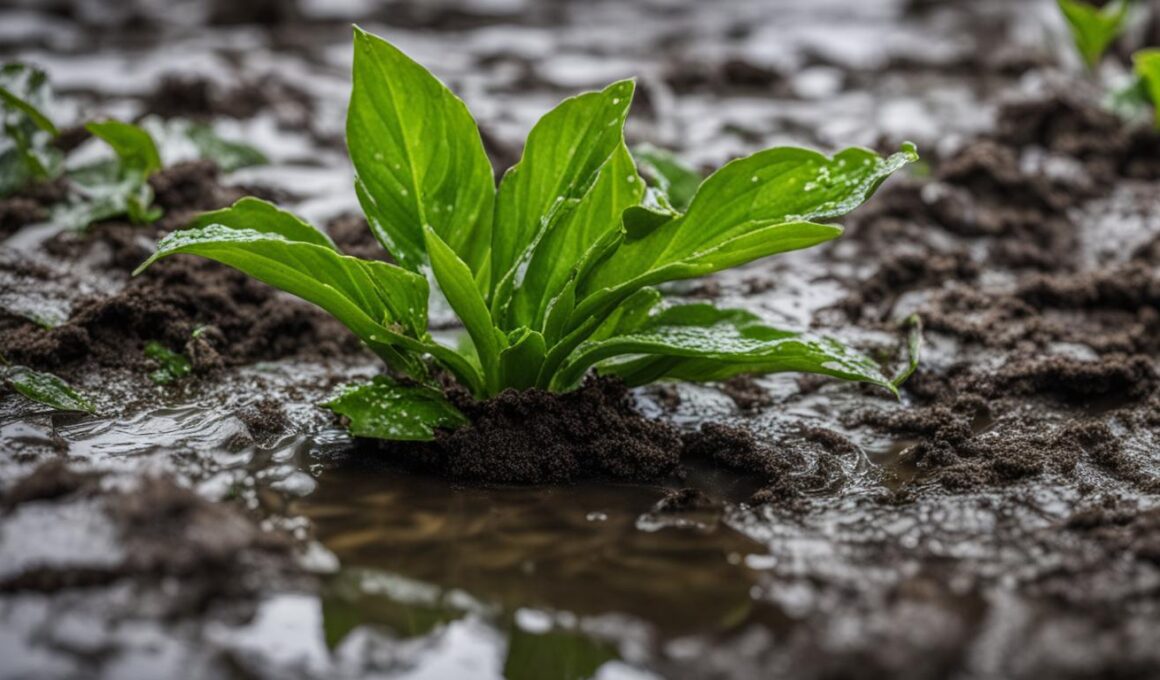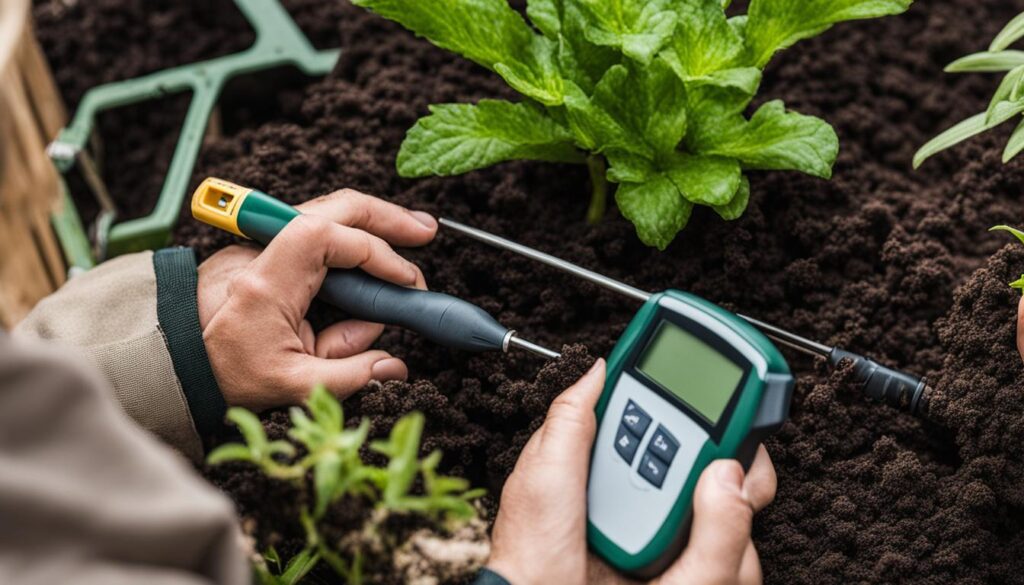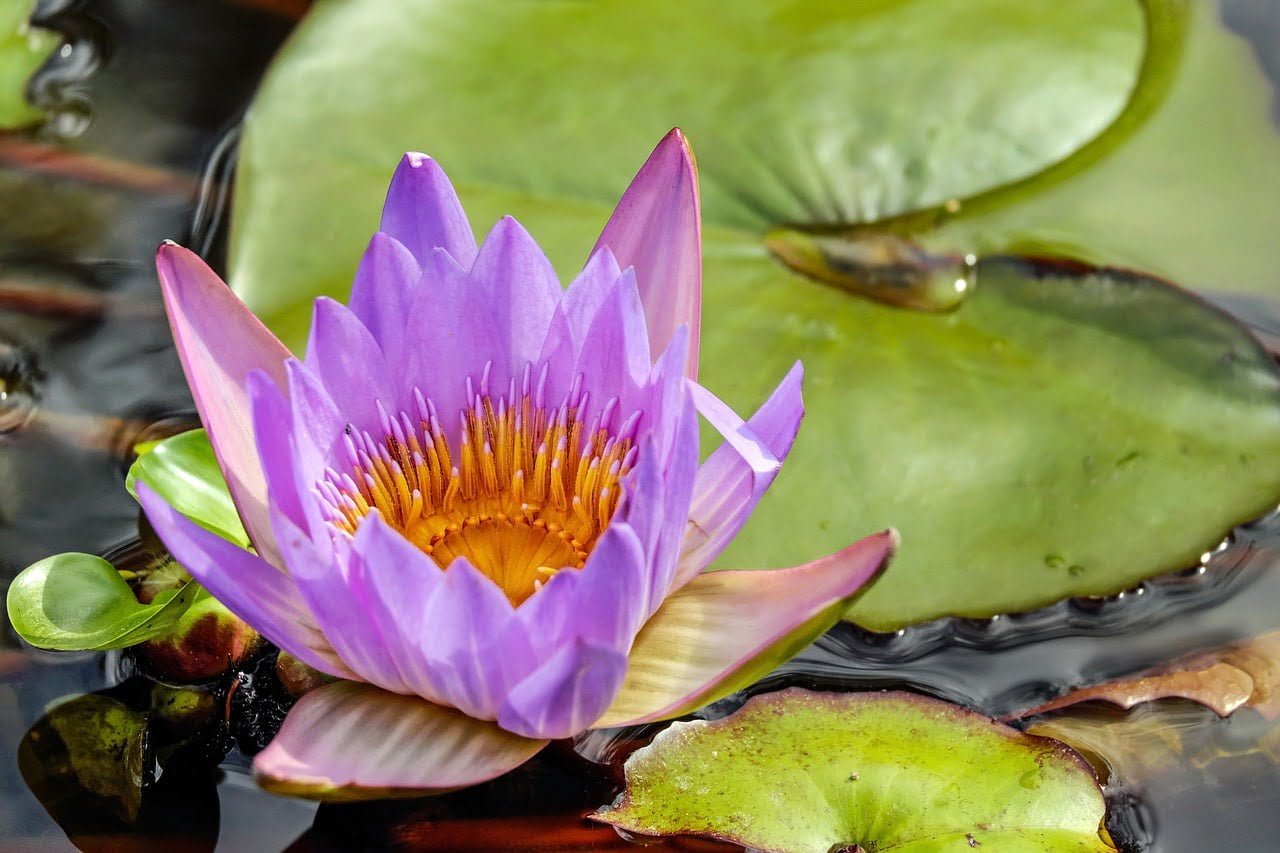Overwatering is a common issue that can have detrimental effects on the health of your outdoor plants. Understanding the signs of overwatering and implementing proper watering techniques is essential to prevent water damage and maintain vibrant, healthy plants.
When it comes to watering outdoor plants, striking the right balance is crucial. Too much water can suffocate the roots, leading to wilting, yellow leaves, and stunted growth. On the other hand, underwatering can result in parched, dehydrated plants. To ensure you don’t overwater your outdoor plants, it’s important to be aware of the signs and take appropriate actions.
Key Takeaways:
- Overwatering can cause water damage and harm the health of outdoor plants.
- Signs of overwatering include wilting, yellow leaves, lack of new growth, and green soil.
- Proper watering techniques, such as checking soil moisture levels and allowing the soil to dry out between waterings, can help prevent overwatering.
- Choosing plants that are suitable for your climate and soil conditions can also reduce the risk of overwatering.
- If you’ve overwatered your plants, steps like moving them to a shady area, checking roots for damage, and treating the soil with fungicide can aid in their recovery.
Signs of Overwatering Outdoor Plants
Overwatering outdoor plants can have detrimental effects on their health. It is crucial to be aware of the signs of overwatering to prevent unnecessary damage to your plants. Here are some common indications that your plants may be receiving too much water:
- Wilting: While wilted plants are often associated with underwatering, overwatered plants can also wilt. The excess water in the soil prevents the roots from getting enough oxygen, leading to wilting.
- Yellowing Leaves: Another sign of overwatering is yellowing leaves. When plants receive too much water, it can cause the roots to become waterlogged, preventing them from absorbing necessary nutrients. As a result, leaves may turn yellow.
- Stunted Growth: Overwatered plants may exhibit stunted growth. When the roots lack oxygen due to excessive moisture, it hampers their ability to take up nutrients and grow properly.
It is important to note that these signs can vary depending on the plant species, so it is recommended to research the specific requirements of your outdoor plants to ensure their optimal care.
Quote:
“Overwatering can have detrimental effects on your plants. Understanding the signs of overwatering, like wilting, yellowing leaves, and stunted growth, is crucial for maintaining healthy outdoor plants.”
By paying attention to these signs of overwatering, you can take the necessary steps to adjust your watering routine and ensure the overall health and vitality of your outdoor plants.
Recognizing Overwatered Plants
When it comes to caring for outdoor plants, finding the right balance of water is crucial. Overwatering can have detrimental effects on plant health, leading to slowed growth, leaf scorch, and even root rot. It’s important to recognize the signs of overwatering to ensure the well-being of your plants.
Signs of Slowed Plant Growth
One of the earliest indicators of overwatered plants is slowed growth. If you notice that your plants are not growing as quickly as they should be, it may be a sign that they are receiving too much water. Overwatering can hinder the uptake of nutrients and oxygen by the roots, stunting their growth and inhibiting overall plant development.
Leaf Scorch and Yellowing Leaves
Another common sign of overwatering is leaf scorch and yellowing leaves. When plants are overwatered, the excessive moisture can cause the roots to become waterlogged and oxygen-deprived. This lack of oxygen can lead to cell damage and the development of leaf scorch, which is characterized by brown or yellow spots on the edges or between leaf veins. Additionally, overwatering can cause leaves to turn yellow as the excess water interferes with proper nutrient uptake.
Potential for Root Rot
Overwatered plants are also at risk of developing root rot, a fungal disease that can be fatal if left untreated. When the soil is consistently too wet, it creates the perfect environment for fungi to thrive, attacking the plant’s roots and causing them to rot. If you notice a foul smell or dark, mushy roots when examining your plants, it’s likely that root rot has set in. Prompt action is essential to prevent further damage and save the plant.
Recognizing the signs of overwatered plants is crucial for their well-being. Slowed plant growth, leaf scorch, and the potential for root rot are indicators that adjustments need to be made in your watering routine. Proper watering practices, such as allowing the soil to dry out between waterings and ensuring adequate drainage, can help prevent overwatering and maintain healthy plants.
Strategies to Avoid Overwatering
Proper watering is crucial for maintaining healthy outdoor plants. By following these strategies, you can avoid overwatering and promote optimal growth:
- Choose the right plants: Select plants that are suitable for your specific climate and soil conditions. Some plants are more tolerant of moisture than others, so do your research and choose wisely.
- Water only when necessary: Check the moisture levels of the soil before watering. Stick your finger about an inch into the soil to determine if it’s dry or moist. Only water your plants when the soil feels dry to the touch.
- Water at the base: Direct the water at the base of the plant, near the roots. This ensures that the water reaches the plant’s roots where it’s needed most. Avoid overhead watering, as it can lead to unnecessary water on the leaves and increase the risk of diseases.
- Improve soil drainage: Good soil drainage is essential for preventing waterlogged roots. Incorporate organic matter or mulch into the soil to improve its ability to drain excess water. This helps prevent water from pooling and causing root rot.
By implementing these strategies, you can ensure that your outdoor plants receive the proper amount of water and avoid the detrimental effects of overwatering.
Quote: “Proper watering is the key to a thriving garden.” – Gardening Expert
Remember, each plant has unique watering requirements, so it’s essential to observe and adjust your watering practices accordingly. With proper watering and plant selection, you can provide the ideal conditions for your outdoor plants to flourish.
How to Rescue Overwatered Plants
If you’ve accidentally overwatered your plants and they’re showing signs of distress, don’t panic. There are steps you can take to rescue them and bring them back to health. Here are some strategies you can try:
- Move the plants to a shady area: Excessive sunlight can further stress overwatered plants. By placing them in a shady spot, you can reduce the amount of water they lose through evaporation and help them recover.
- Check the roots: Gently remove the plants from their pots or dig around the roots if they are in the ground. Look for any signs of root rot or mushy roots. If you spot any, prune away the affected areas with clean gardening shears.
- Treat the soil with fungicide: Overwatering can create a damp environment that promotes the growth of fungi. To prevent or treat fungal infections, apply a plant oil-based fungicide to the soil according to the product’s instructions.
Remember that the success of rescuing an overwatered plant depends on the severity of overwatering and how long it has occurred. It’s important to act promptly and provide the necessary care to give your plants the best chance of recovery.
Expert Tip:
“When rescuing overwatered plants, it’s crucial to strike a balance between providing enough water for recovery and avoiding further saturation. Observe the plants closely and adjust your watering routine accordingly.”
By following these steps and giving your overwatered plants the care they need, you can increase their chances of survival and restore their health. Next, we will explore the symptoms of having too much water in your landscape and how to prevent it.
Symptoms of Too Much Water in Your Landscape
If your outdoor landscape is experiencing excessive water, it can have detrimental effects on your plants. Recognizing the symptoms of too much water is crucial for taking immediate action to restore the health of your landscape. Here are some key signs to look out for:
Brown and Wilted Leaves
One of the most common indicators of overwatering in your landscape is the presence of brown and wilted leaves. When plants receive too much water, the roots become waterlogged, and the lack of oxygen causes the leaves to turn brown and become limp. This can be particularly noticeable in plants with broad leaves.
Water Pressure Building in the Cells
Another symptom of excessive water in your landscape is the buildup of water pressure within the cells of plant leaves. This can cause the leaves to become swollen and appear bloated. If you gently press a leaf and notice water leaking out, it is a clear sign that your plants are suffering from too much water.
Stunted Growth and Yellowing Leaves
Plants that receive excessive water often exhibit stunted growth and yellowing leaves. The roots are deprived of oxygen, which inhibits their ability to take up nutrients and support healthy growth. As a result, the leaves may turn yellow and the plant’s overall growth may be stunted. It’s essential to address this issue promptly to prevent further damage.
By being vigilant and recognizing the symptoms of too much water in your landscape, you can take the necessary steps to restore the health of your plants. Understanding these signs will help you adjust your watering practices and ensure that your landscape thrives.
Conclusion
To prevent overwatering and maintain healthy outdoor plants, it is essential to practice proper watering techniques. By following these guidelines, you can ensure the well-being of your plants and avoid the detrimental effects of excessive water.
Start by checking soil moisture levels regularly. This simple step will help you determine whether your plants require watering or if they still have sufficient moisture. Remember, it is better to underwater than to overwater.
Additionally, choosing the right plants for your climate and soil conditions is crucial. Opt for species that are well-suited to your environment, as they will require less water and be more resistant to overwatering damage.
Finally, adjust your watering frequency. Rather than watering your plants every day, water them less frequently but for longer durations. This allows the water to penetrate deep into the soil and encourages the roots to grow deeper, making them more resilient to drought and reducing the risk of overwatering.
Should I Be Concerned About Overwatering Outdoor Plants If I Want to Plant Hydroponic Basil in Soil?
Yes, you should be concerned about overwatering if you want to plant hydroponic basil in soil. Hydroponic plants require less water to thrive, so overwatering can lead to root rot and other issues. It’s important to monitor soil moisture carefully and adjust watering accordingly.
FAQ
Can you over water outdoor plants?
Yes, overwatering is a common issue that can lead to the death of outdoor plants.
What are the signs of overwatering outdoor plants?
Signs of overwatering include wilting, yellow leaves, a lack of new growth, and green soil.
How can I recognize overwatered plants?
Overwatered plants may exhibit symptoms such as slowed plant growth, yellowing leaves, leaf scorch, water-soaked spots or blisters, and rotting on the plant’s crown.
What strategies can I use to avoid overwatering?
To avoid overwatering, choose plants that are suitable for your climate and soil conditions. Water your plants only as needed, allowing the soil to dry out between waterings. It is also important to water at the base of the plant and provide proper drainage through the use of mulch or organic matter.
How can I rescue overwatered plants?
Overwatered plants can often be rescued by moving them to a shady area, removing dead leaves, checking the roots for signs of damage, and treating the soil with a plant oil-based fungicide.
What are the symptoms of too much water in my landscape?
Signs of too much water in your landscape include brown and wilted leaves, water pressure building in the cells of plant leaves, and stunted growth accompanied by yellowing leaves.
How can I prevent overwatering and maintain healthy plants?
To prevent overwatering and maintain healthy outdoor plants, it is important to practice proper watering techniques. This includes checking soil moisture levels, selecting appropriate plants for your climate and soil, watering less frequently but for longer durations, and improving soil drainage.












